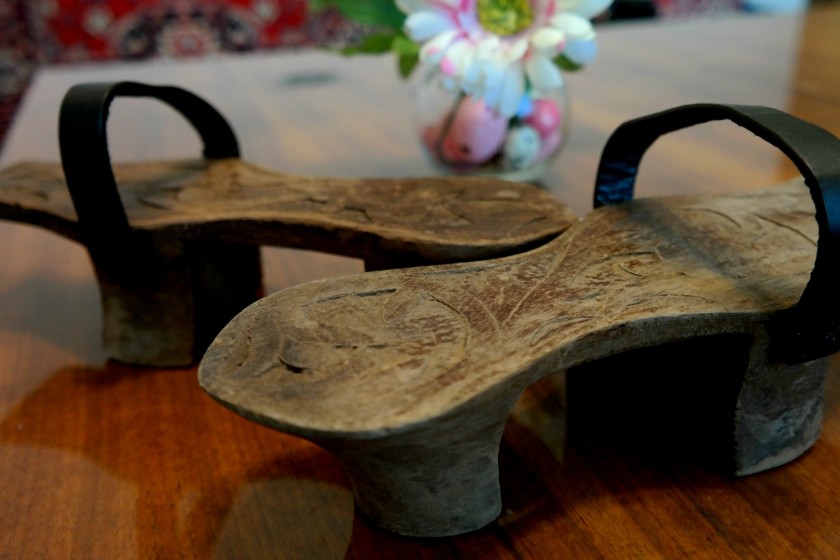
Gyumri’s Public Baths: Hasmik and Vahan Remember the Old Days
Yeranuhi Soghoyan
Women in old Gyumri used to wear wooden slippers, usually made of oak, when going to public baths, to protect their feet from wastewater and fungal diseases.
If the slippers were ornamented, that spoke to the aesthetic taste of the owner. There were simple wooden slippers provided in the baths, without ornamentation, cleaned by chlorine and dried in the sun after each use.
Wooden slippers were part of the dowry in Gyumri families, passing from mothers to daughters. Thanks to this tradition, Hasmik Hambardzoumyan has got her great grandmother's ornamented slippers, dating to the end of the 19th century.
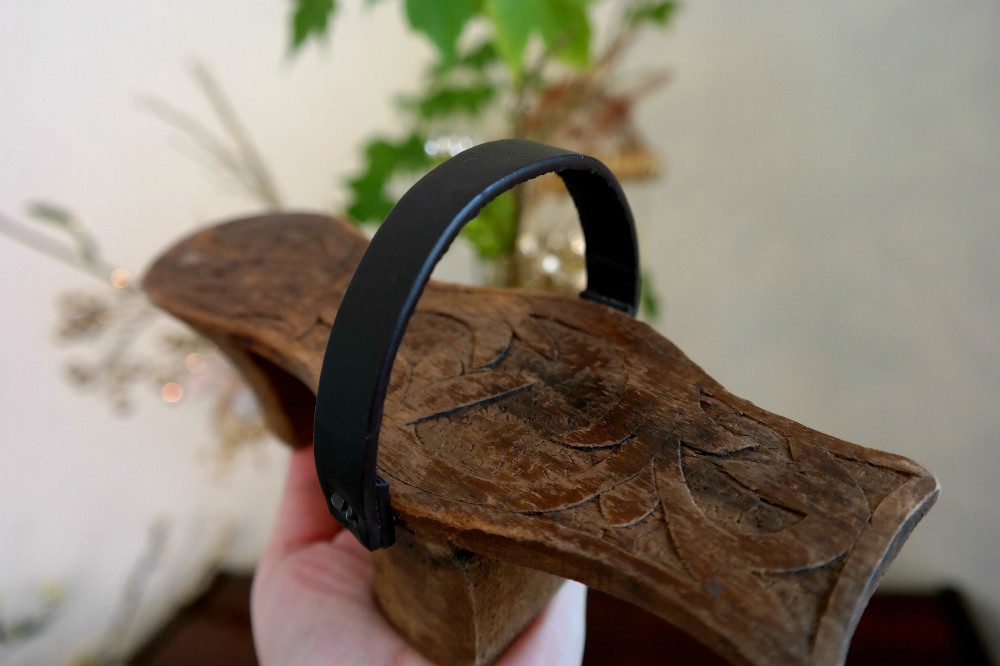
It’s been around 50 years that these wonderfully preserved slippers have lost their operational significance. "Well, they’re already museum samples," says Hasmik.
Hasmik’s niece Luisa recalls going to public baths as a child. "Usually we went to the baths with separate rooms. Only once did I bathe in a unisex public bath. I remember the big hall, on one side of which there were separate places with showers, without doors, having just walls in between. I remember the basin in the middle of the hall, surrounded by seated fat old women, always pouring themselves with water in large glasses,” Luisa laughs.
Luisa recalls women covering the window with a piece of wood from the inside. "In fact, the little boys in that neighborhood used to come and look secretly. I recall a lovely white woman in the hall, with long black hair. She noticed the boys and calmly walked to the window to close it,” says Luisa.
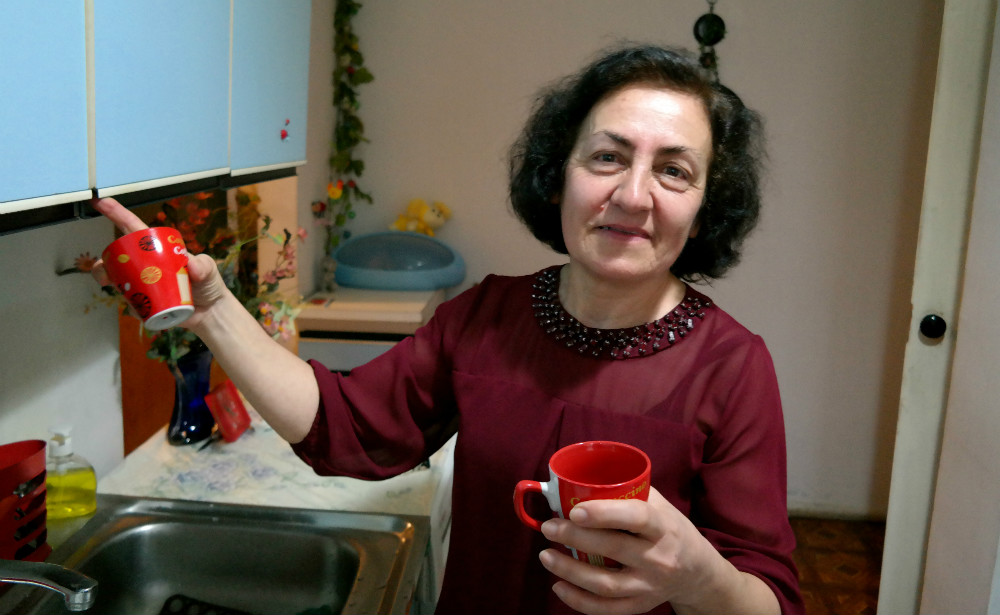
Hasmik Hambardzoumyan
At the beginning of the 20th century, weekends were preferred days for bathing. It was compulsory to visit a bath on the eve of church holidays. The price list was published in a local newspaper in the early 20th century, mentioning that it was free for children under five, while girls had to pay 15, women - 25 and men from 40 to 60 kopeks.
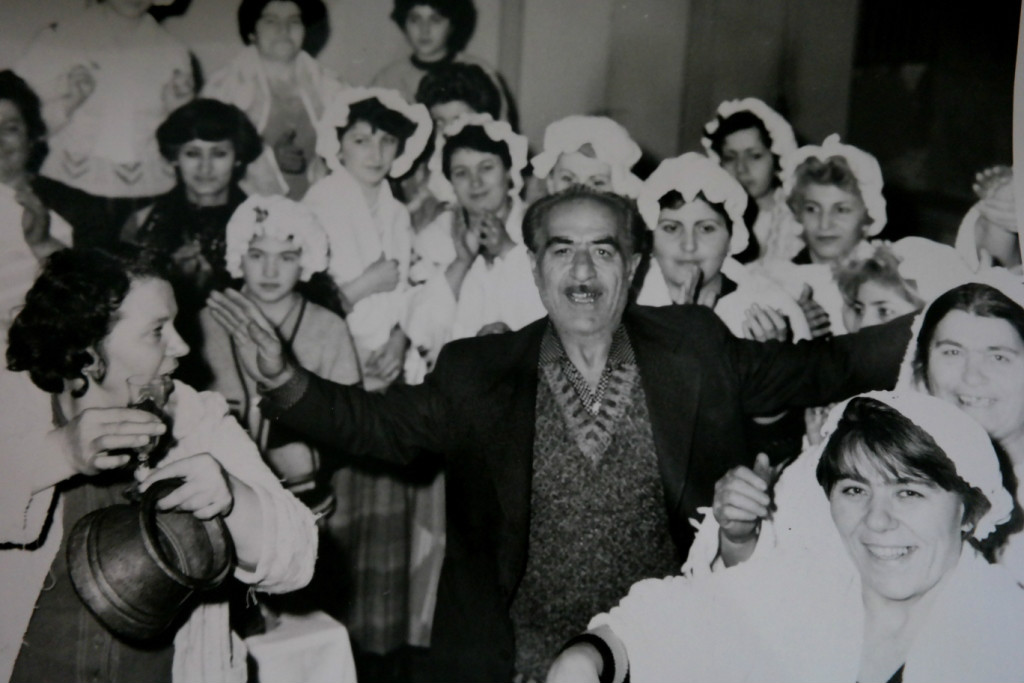 From Mkrtich Manoukyan's personal archive
From Mkrtich Manoukyan's personal archive
Hetq wrote about Mkrtich Manoukyan's wedding in a public bath in 1985. At the beginning of the 20th century, there was also a mourning bath tradition. After the burial, those who mourned did not bathe for forty days, and men did not even shave. After forty days, they were taken to a public bath by the relatives of the deceased, and men were also taken to barber’s. During the Soviet era, only the habit of not shaving was preserved.

Vahan Petrosyan
In 1980, the Armenian film “A Piece of Sky” was shot in Gyumri. Back then, Vahan Petrosyan worked for the police.
It was decided to shoot one of the scenes with the participation of actress Galina Belyayeva in Gevorents Bath on Gorki Street, which was later cut from the film. Petrosyan recalls the attention that this shooting gained, with many young people trying to look from the bath windows, making the police officer run after them from one window to another.
"Going to a public bath was an attraction - one would sing, another one - joke," continues Vahan Petrosyan. "Every Sunday we went to bathe with our families. We had to stand in a queue for the Central public bath rooms tickets for three hours before the opening, and buy tickets for the shower room separately, inside the bath. In the Gevorents bath, there were no tickets -just a queue to enter.”
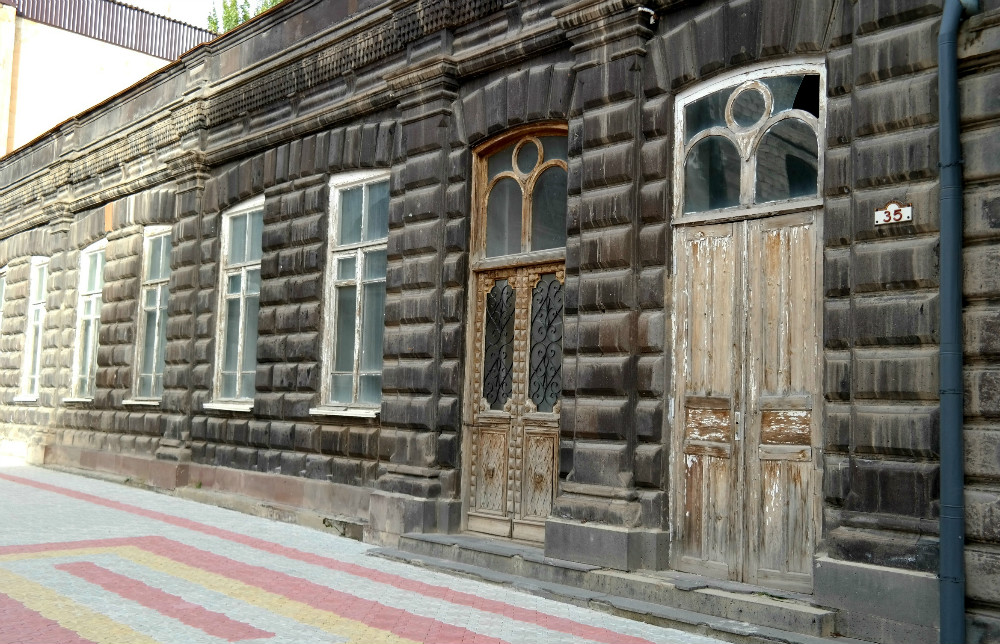
Central Bath on Abovyan Street
Gyumri residents don’t believe that public baths will ever be restored. The building owners changed their function, turning them into hotels, restaurants, cafes and so on. Vahan Petrosyan notes that the most important thing now is to preserve the buildings as they were, regardless of their present function.
 Videos
Videos Photos
Photos
Comments (7)
Write a comment